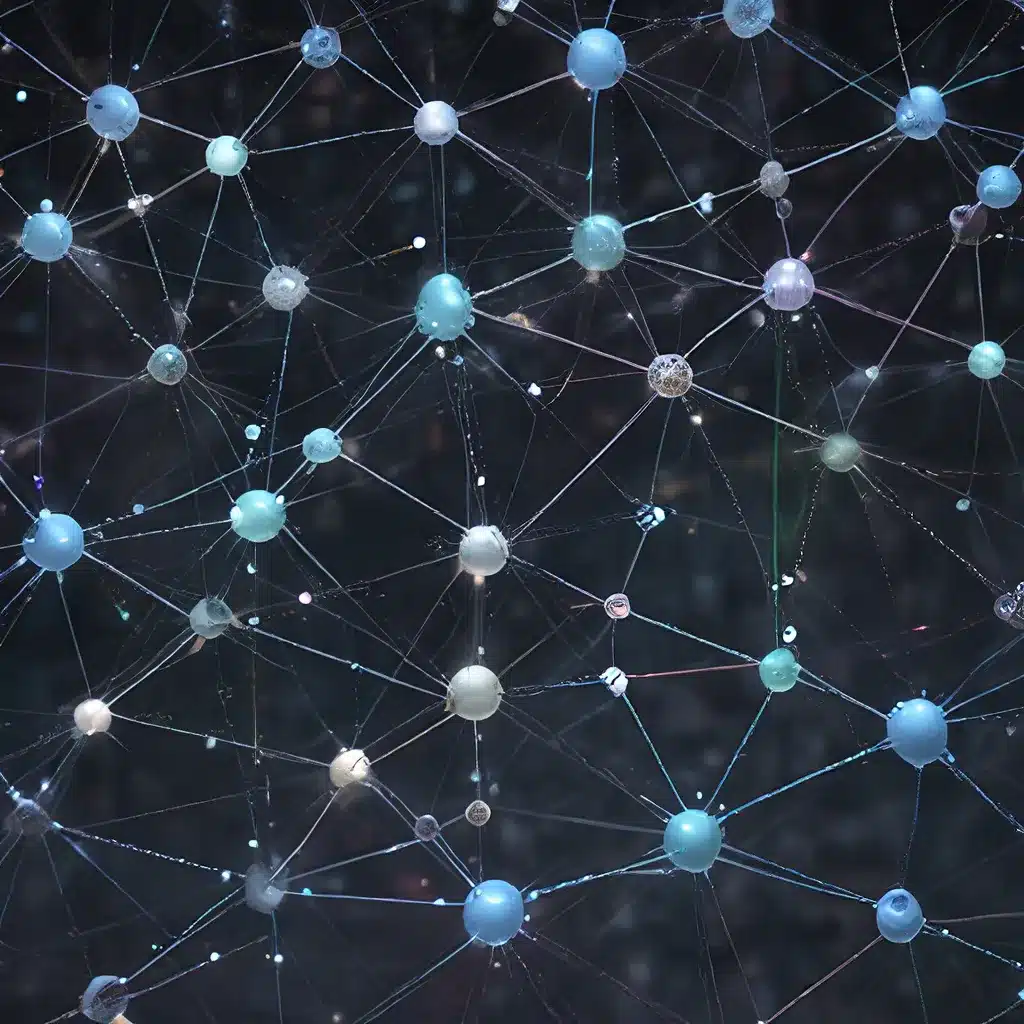
Understanding the Importance of Sensor Network Design
As the Internet of Things (IoT) continues to revolutionize industries and our daily lives, the underlying sensor networks that power these connected ecosystems have become increasingly complex and critical. Sensor networks, composed of vast arrays of interconnected sensing devices, are responsible for gathering, processing, and transmitting the vast amounts of data that fuel IoT applications.
Designing robust and efficient sensor network architectures is essential for ensuring the reliability, scalability, and security of IoT systems. Distributed algorithms have emerged as a powerful approach for orchestrating the coordination, resilience, and energy management within these decentralized networks.
By leveraging distributed algorithms, sensor network designers can address the unique challenges posed by the scale, complexity, and dynamic nature of IoT environments. This article will delve into the key principles and applications of distributed algorithms for collaborative sensor networks, exploring their impact on enhancing coordination, resilience, and scalability.
Enabling Coordination and Cooperation in Sensor Networks
One of the primary benefits of distributed algorithms in sensor networks is their ability to facilitate coordinated and collaborative behaviors among the individual sensing devices. In a decentralized IoT ecosystem, where nodes (sensors, actuators, and other connected devices) may be geographically dispersed and operate independently, distributed algorithms can enable seamless coordination and task-sharing.
Collaborative localization algorithms, for instance, allow sensor nodes to collectively determine their spatial positions, even in the absence of centralized infrastructure or GPS. By exchanging location-based information and leveraging consensus-building mechanisms, these distributed algorithms enable the sensor network to self-organize and optimize its coverage and performance.
Similarly, distributed task allocation algorithms can coordinate the division of labor among sensor nodes, ensuring that sensing, data processing, and communication tasks are efficiently distributed across the network. This load-balancing approach helps to maximize the utilization of resources, prevent bottlenecks, and enhance the overall responsiveness of the sensor network.
Enhancing Resilience and Fault Tolerance
In dynamic and challenging IoT environments, sensor networks must be designed with resilience and fault tolerance in mind. Distributed algorithms play a crucial role in ensuring that sensor networks can adapt to changing conditions, recover from failures, and maintain continuous operation.
Distributed consensus protocols, such as Raft and Paxos, enable sensor nodes to reach agreement on the state of the network, even in the face of node failures or network partitions. By leveraging these algorithms, sensor networks can self-heal, automatically rerouting data and redistributing tasks to maintain high availability and data integrity.
Distributed monitoring and anomaly detection algorithms further enhance resilience by empowering sensor nodes to collectively identify and respond to unusual patterns or potential threats within the network. This decentralized approach to fault detection and mitigation reduces the risk of single points of failure and ensures that the sensor network can adapt and recover in a timely manner.
Addressing Scalability Challenges in IoT Sensor Networks
As the number of connected devices in IoT ecosystems continues to exponentially increase, the scalability of sensor networks has become a critical concern. Distributed algorithms offer innovative solutions to address the challenges of managing, coordinating, and securing large-scale sensor networks.
Hierarchical and clustering-based architectures, enabled by distributed algorithms, allow sensor networks to scale efficiently by organizing nodes into logical groups or clusters. These hierarchical structures facilitate efficient data aggregation, task delegation, and resource management, enabling sensor networks to handle increasing numbers of devices without compromising performance or energy consumption.
Moreover, distributed security protocols and decentralized access control algorithms can help to secure large-scale sensor networks by distributing trust and decision-making among the nodes. This approach reduces the attack surface and the reliance on centralized points of control, making the sensor network more resilient to cyber threats and unauthorized access.
Optimizing Energy Management in Sensor Networks
One of the critical challenges in sensor network design is energy management, as many IoT devices are battery-powered or have limited energy resources. Distributed algorithms play a pivotal role in optimizing the energy consumption of sensor networks, ensuring their long-term sustainability and operational efficiency.
Distributed duty cycling algorithms, for instance, can coordinate the sleep/wake cycles of sensor nodes, minimizing idle listening and reducing overall power usage. By leveraging consensus-based mechanisms, these algorithms enable nodes to dynamically adapt their sleep schedules based on network conditions, traffic patterns, and energy levels, thereby extending the lifetime of the sensor network.
Similarly, distributed load-balancing and task scheduling algorithms can optimize the energy consumption of sensor nodes by distributing computational and communication tasks across the network. This approach helps to avoid the premature depletion of individual node batteries and ensures more efficient utilization of the available energy resources.
Conclusion: Embracing the Power of Distributed Algorithms in Sensor Networks
As the IoT landscape continues to evolve, the role of sensor networks in powering innovative applications and services will only become more critical. By embracing the power of distributed algorithms, sensor network designers and IoT developers can enhance the coordination, resilience, scalability, and energy efficiency of these vital technological ecosystems.
Through the principles of collaborative localization, task allocation, consensus-building, and hierarchical management, distributed algorithms empower sensor networks to adapt, self-organize, and optimize their performance in dynamic and challenging environments. As the sensor networks of the future continue to push the boundaries of connectivity, intelligence, and sustainability, the advancements in distributed algorithms will play a pivotal role in shaping the next generation of IoT innovations.
Explore the world of sensor networks and distributed algorithms further by visiting the Sensor Networks Organization website, where you can find additional resources, industry insights, and research updates on this transformative technology.